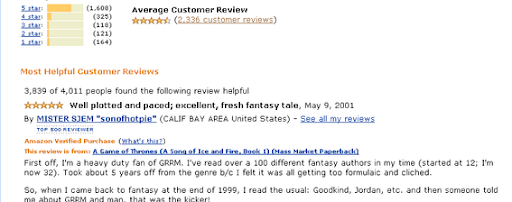
It’s essential to understand which customer satisfaction metrics are worth considering and what potential they hold.
Stats suggest that:
- 67% of consumers stated good customer experience as the top reason for coming back to business. (ICSC)
- 1 in 3 customers agreed that they will pay more if they receive a higher level of customer service. (Genesys)
- Around the globe, 96% of consumers say customer service is an important factor in their choice of loyalty to a brand. (Microsoft)
- 80% of respondents said they’d ceased their business with a company because of a poor customer experience. (Hubspot Survey).
Hence, customer satisfaction, or CSAT in short, is a critical factor for developing long-term relationships with customers. But maintaining long-term relationships is a challenging job that demands your finger to be on the customer’s pulse.
You have to frequently measure what’s keeping your customers engaged, and what’s driving them off. Ongoing customer satisfaction leads to Loyalty, and Customer Loyalty is a worthy reward to play for.
In this post, we’ve outlined 10+ Customer Satisfaction Metrics, looked at the role they play, and offered tips on how to use them. Let’s dive in.
Importance Of Measuring Customer Satisfaction Metrics
Simply, customer satisfaction is all about whether you have successfully made your customers happy or not.
It seems important, indeed!
To survive in the cut-through market business needs exceptional products and customers who are happy and keep coming back while recommending their brand to their friends and family.
However, every brand isn’t fortunate enough to experience this. Businesses often experience angry, dissatisfied, and single-purchase customers. Only the brands focused on customer satisfaction thrive.
Therefore customer satisfaction is the key differentiator between a thriving and a failed business. The brands must be customer-centric and ensure that it’s the only proactive way to customer retention.
And you need customer satisfaction metrics in place, for the following reasons:
To Understand Customer Needs and Expectations.
A clarity of ‘how you perceive your customers’ needs vs. what customers actually need’ is crucial. This approach will enable you to focus more on the key areas that actually need to be addressed.
Offering products and services to fulfill customer demands leads your brand to success, and measuring CSAT metrics is the best way to serve this purpose.
To Acquire Both Qualitative and Quantitative Data.
While tracking customer satisfaction, only gathering quantitative data couldn’t yield the best results. Rather you have to focus on collecting both qualitative and quantitative data.
For example, having high scale ratings is not enough, you need to have deeper insights to know why your customers have individually rated you 7,8,9, or 10 on a scale of 1-10.
Satisfied Customers Are More Profitable.
Satisfied customers are more likely to be considered repeat customers who minimize the cost of acquiring new ones. Moreover, such customers tend to act as brand advocates by referring your brand to others and ultimately bringing in more business.
To Identify Areas for Improvement.
Once you’re done with collecting customer feedback, it’s time to analyze it. This customer feedback data could reveal the key areas that turn off your customers’ interest.
This way, you can tailor your products and services as per their needs and keep your customers happy and engaged for years. Offering great products and customer experiences doesn’t only hinge on understanding customer satisfaction metrics; it also involves having efficient tools in place for smooth client transactions. For instance, using the best invoicing software integrates your billing process seamlessly into your business operations.
So, now that we have discussed the significance of measuring CSAT metrics, it’s time to move further and identify the crucial metrics that should be taken into account for boosting customer satisfaction scores.
10 Best Metrics To Measure Customer Satisfaction
CSAT metrics offer businesses complete visibility of how customers interact and feel about using their products and services. Hence, it’s crucial to meticulously design your customer outreach programs based on the following essential customer metrics.
1. Net Promoter Score
Watch: What Is Net Promoter Score (NPS) and Why Businesses Use It?
Net Promoter Score (NPS) is considered the primary CSAT metric among all industry verticals to gauge customer loyalty and their willingness to recommend a product or service.
It was back in 2003 when a management consultant, Fred Reichheld of Bain & Company, developed the idea of a net promoter score system in partnership with Satmetrix.
A survey was sent out with an intended question to find out the customer satisfaction score – “How likely are you to recommend our product/services/brand to a friend or family?”
How to measure customer satisfaction with NPS:
- Customers usually answer a targeted question such as ‘How likely are you to recommend our product/services/brand to a friend or family?’
- The responses are based on a scale of 0 (Unlikely) to 10 (Very likely).
- The respondents are broadly categorized into Detractors (0-6), Passives (7-8), and Promoters (9-10).

How To Calculate NPS
Calculating NPS is easy. Simply subtract the percentage of ‘Detractors’ from the percentage of ‘Promoters’, and the numerical score generated between -100 and 100 will be your Net Promoter Score.
Here’s an example:

Create a survey and sent it out to 500 users and let’s assume you’ve received 300 responses in return as follow:
- 60 respondents shared detractor score (0 – 6)
- 90 respondents gave passive score (7 – 8)
- 150 respondents gave promoter score (9 – 10)
Now, calculate Promoter’s and Detractor’s percentage:
- %Promoters = 150 divided by a total number of responses (300) and multiplied by 100. You’ll get promoter% as 50%
- %Detractors = 60 divided by a total number of responses (300) and multiplied by 100. You’ll get detractor% as 20%
Now subtract the percent of detractors (20%) by the percentage of promoters (50%), and you’ll have your total Net Promoter Score as 30.
Pros of NPS Metric
- Offers quantifiable results & measures performance
- Helps analyze service metrics
- Easy-to-track single-question metric
- Help identify brand advocates
- Helps to track individual service performance such as customer support
Cons of NPS Metric
- ‘Recommend’ question isn’t suitable for every case
- Garners only solicited feedback
- Lacks context behind the responses
- The sample size is often negligible.
2. Customer Satisfaction Score
As the name suggests, the Customer Satisfaction Score measures the overall satisfaction of your customers with your brand, products, and services. CSAT surveys are often sent after a customer’s interaction with your company in order to collect fresh insights on a scale of 0-5.
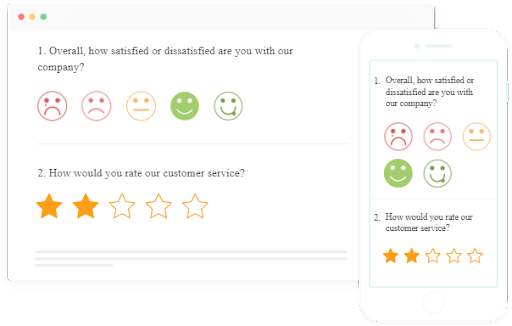
How to measure CSAT score
CSAT surveys usually entail close-ended questions. Customers are presented with a question such as “How was your experience interacting with our customer support?” – right after their interaction with your business.
This enables the customers to rate their overall experience on a scale of 1-5, where 1 depicts the very unsatisfactory experience and 5 denotes the highly satisfactory experience. However, you can choose among different survey templates as per your business needs.
How to calculate CSAT score
Let’s assume you’ve collected feedback from 8 customers, as shown in the table below:
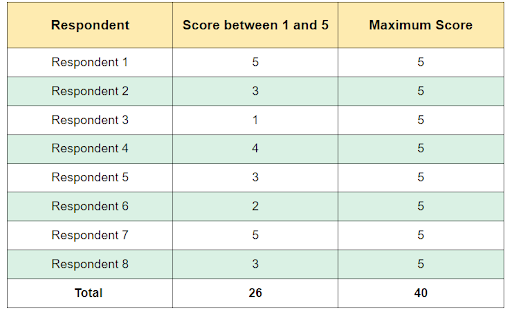
Now you can measure CSAT score via two methods:
Method 1: Divide the sum of all scores by the sum of the maximum possible scores.

Now simply divide the sum of all scores (26) by the maximum possible score (40).

In this case, your CSAT score will be 65%.
Method 2: Another way to calculate CSAT is the percentage of happy respondents i.e., customers with scores 4 and 5 on a scale of 1-5.

So, we have a total of 3 respondents with scores 4 and 5; hence we will simply divide 3 with the total number of respondents i.e., 8.
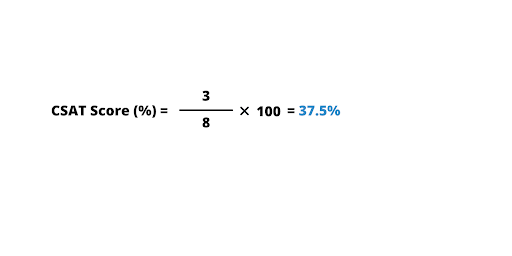
Hence, your CSAT score is 37.5%.
Pros of CSAT score metric
- Fast and easy to calculate
- High response rates
- Easy to compare with available industry benchmarks
Cons of CSAT score metric
- It denotes short-term sentiment
- Unsatisfied customers might not take the CSAT surveys
- Only offer insights into the latest interactions.
3. Customer Effort Score
CES follows a different approach in contrast to other metrics to measure customer satisfaction. Rather than asking how satisfied the customers are, it measures the efforts a customer exerts to complete a task with your brand, including raising a ticket, purchasing or returning a product.
A perfect example of a Customer Effort Score question would be:

This way, customers can easily share their experience with a specific task.
Also, it should be noted that, unlike NPS or CSAT metrics, a low score is a good score when measuring CES, which represents that a customer has had a hassle-free experience with your brand.
How to measure Customer Effort Score
Customer Effort Score examines customer’s efforts with your brand. Firstly, conduct a CES survey with either a 1-5 or 1-7 scale range.
Once you have the responses, calculate the overall Customer Effort Score by adding all the individual scores and dividing it by the total number of respondents.

To illustrate it, let’s assume a total of 10 respondents have taken part in your CES survey with individual scores as 4, 5, 8, 9, 6, 7, 3, 6, 2, 1.
So, the CES would be:
CES = (4+5+8+9+6+7+3+6+2+1)/10 = 51/10 = 5.1
Companies usually measure CES to reveal high-effort pain points along their customer journeys. This enables companies to work upon those areas to lower the Customer Effort Score.
Pros of CES metric
- Helps eliminate delays
- Reduces customer churn
- Offers a granular view of key improvement areas
- It helps increase customer values
Cons of CES metric
- Only measures perceived customer efforts
- CES doesn’t directly gauge customer loyalty or retention
4. Customer Service Satisfaction
Customer Service Satisfaction metric intends to combine two crucial aspects of building a perfect customer experience – Customer Service and Customer Satisfaction.
Customer service is the method of helping customers fulfill their respective needs via online content, live chat, help desk, and more.
Thus, the CSS metric helps businesses to analyze whether or not their customers are happy with their services at any point of their customer lifecycle, especially post-purchase service.
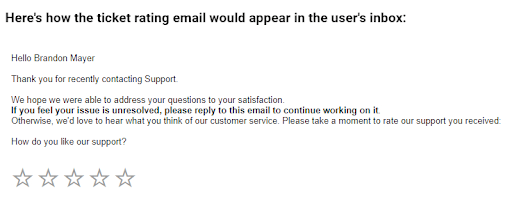
How to measure Customer Service Satisfaction
A CSS Survey question is shared with your customers, allowing them to share their ratings with respect to your brand’s services.
CSS survey questions may include:
- On a scale of 1-10, how would you rate your experience with our customer support team?
- What is the best aspect that you liked about our customer support team?
- Was the customer service representative polite enough?
CSS Score = Sum of All Ratings/Total Number of Respondents
You can leverage these ratings to measure customer service quality and the customer support agents’ performance.
Pros of CSS metric
- Help reveal specific friction points
- Offer insights into Customer Service at specific touchpoints
- Easy-to-track results
Cons of CSS metric
- Results aren’t broad
- It doesn’t offer context behind low scores
- Unsuitable for multi-channel journeys
5. Customer Health Score
For customer success teams, it’s crucial to know whether they are playing safe or not. Chances are, they might be over-servicing the customers who are likely to churn anyway, whereas they might overlook the ones that could be saved and converted into loyal customers.
Therefore Customer Health Score enables customer success teams to identify which customers are healthy or which are at-risk.
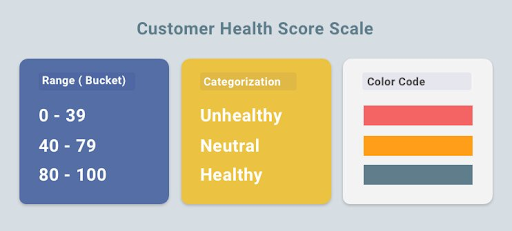
How to measure Customer Health Score
To effectively measure CHS, you can refer to the following dimensions:
- Economic signals: Billing trend, due bill amounts, days since last renewal.
- Product signals: Usage frequency, depth of usage, active product-user trend, paid plans usage, and more.
- Service signals: Unresolved tickets, frequency of new interactions, CSAT score.
- Relationship signals: Touchpoint frequency, NPS, number of interactions.
Pros of CHS metric
- It helps divide results into different categories
- Helps prioritize actions to improve customer’s health
- Improves customer team’s focus
Cons of CHS metric
- Ineffective in revealing why customers are frustrated
- Incorporates various actions such as login frequency and referrals – making the overall process complex.
6. Customer Churn Rate
Regardless of the quality of services offered by your business, your customers aren’t going to stick around forever. Customers will churn, but you just cannot overlook the churned customers over a period of time.
Customer Churn Rate is defined as the percentage of churned customers during a given period of time. Your business’ annual churn rate is the percentage of customers lost per year. On the whole, this CSAT metric helps identify if your business is facing customer churn.
How to measure Customer Churn Rate
Before you analyze the ways to minimize customer churn, it’s crucial to identify where you currently stand.
There are various ways to measure Customer Churn Rate. You can follow this simple formula:
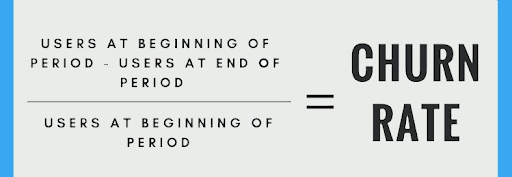
Divide the number of customers lost during a time period (for example 30 days) with the number of customers you have at the beginning of that time period (30 days).
Let’s assume, at the beginning of X month you had 500 customers, and at the end of that month, you are left with 320.
So your Customer Churn Rate will be:
Churn Rate = (Users at beginning of period-Users at end of period)/Users at beginning of the period
i.e. (500-320)/500 = 36% churn rate.
Pros of CCR metric
- Easy to calculate
- Portrays the picture of your customer base
- Helps identify how effectively a business is retaining customers
- Helps to identify key improvement areas
Cons of CCR metric
- Doesn’t reveal the churned customer’s persona
- Doesn’t help in identifying the reason for churn
7. Customer Reviews
Customer reviews are considered the most prominent factor for increasing business sales and creating a loyal customer base. 66% of loyal customers prefer writing a positive online review after a good experience (KPMG).
A customer may leave positive or negative feedback on online store websites, review sharing platforms, product comparison websites, social media channels, Google My Business pages, and more.
Such reviews help businesses understand their customer’s perceptions after using their products or services. And customer satisfaction statistics suggest that having online reviews can help increase business conversion rates by 270%.
How to collect more reviews
Customers these days prefer reading online reviews before making a purchase. In fact, people trust customer reviews of products 12 times more than the product descriptions written by the brands.
That’s why you need to encourage your customers to share online feedback as they entice prospective customers to buy similar products and services.
You could simply ask as follow:
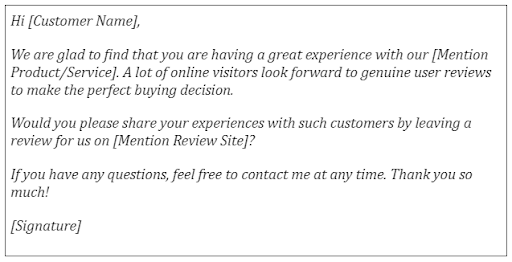
Pros of Customer Reviews
- They portray brand trustworthiness and transparency
- They highlight areas that need improvement
- Help in increasing brand awareness and reach
Cons of Customers Reviews
- You cannot persuade every customer to share online feedback
- Negative reviews catch more eyes
8. Customer Acquisition Cost
CAC metric is an approximation of the total cost your business will need to acquire a new customer or retain an existing one. This metric is useful in calibrating investment and business decisions.
It’s crucial to have an eye on this CSAT metric because no one can afford to have customer acquisition costs greater than their business revenues for longer periods.
How to measure Customer Acquisition Cost
To calculate CAC, sum up all your business spendings for a given period and divide it by the total number of customers acquired during that period of time.
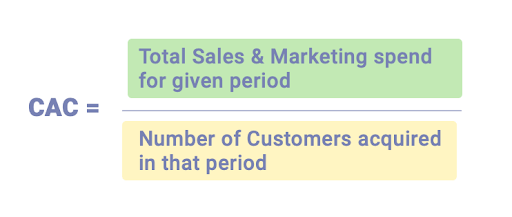
For example, you have spent $5,000 for 6 months and successfully acquired 150 customers.
So CAC would be :
CAC = Total cost spend on sales & marketing for a period / Number of customers acquired in that period
i.e. (5000)/150 = $33.3
You have spent $33.3 on acquiring one customer during the last 6 months.
Pros of CAC metric
- It helps you determine the cost to acquire a new customer
- It helps analyze where you can save
Cons of CAC metric
- Results don’t reflect customer satisfaction
- Shorter life span
9. Customer Lifetime Value
Like the CAC metric, Customer Lifetime Value also deals with costs. CLV calculates the worth of a customer to the business for the whole period of their business relationship.
If the CLV of an average customer of a business is $500 and it costs more than $500 to acquire a new customer, the business could be losing money and should work on minimizing the CAC.
This way, CLV assists businesses to develop strategies for acquiring new customers and retaining the existing ones while maintaining profit margins.
How to measure Customer Lifetime Value
Calculating CLV could be complex for bigger companies considering the challenges of segregated teams, systems, and untargeted marketing. However, when data gets integrated from all areas, it becomes easier to calculate CLV.
Putting simply, CLV can be calculated as:
CLV = Customer revenue – Costs of acquiring and retaining the customer
Pros of CLV metric:
- Helps plan scalability
- Helps integrate targeted demographic in one place
- Emphasizes customer success
Cons of CLV metric:
- Difficult to predict future
- Could be based on an educated guess.
10. Customer Ticket Request Volume
It’s usually accepted that customers are directly interacting with your business via accessible ticketing software. However, receiving an enormous amount of tickets reflects that there is a potential problem that you should consider solving at the earliest.
Reasons to gauge Customer Ticket Request Volume
- To analyze business demand: Ticket request volume reveals the necessary clues about customer demands based on past ticket volumes.
- To estimate staffing: Knowing the ticket request volume could arm you with the perfect estimation of the required support agents and their respective areas.
How to calculate Customer Ticket Request Volume

Compare the volume of tickets you receive month over month or week over week to analyze if the number spikes after a new feature or product launch.
Pros of Customer Ticket Request Volume
- Provides a detailed view of workload for the support team
- Helps to identify patterns in overall ticket volume
- Helps to manage staffing needs
Cons of Customer Ticket Request Volume
- The overall analysis could be confusing
- Only valuable when tracked along with other consumer metrics
Other Customer Satisfaction Metrics
11. Average Number of Replies (per request/case)
A business’ average number of replies says a lot about its customers’ efforts to get their queries resolved. This data is significant as it determines how many times a customer has to interact with your support team to get their answers.
If the average number of replies are unusually high, then it’s worth considering:
- Is it a new team member? If so, do they require more training? Or perhaps they may need someone to assist them with better solutions.
- Do you have someone on your team who is capable of handling tougher cases?
- Is it a part of a product that’s too complex or confusing?
It completely depends on what you want to track or what you think is the main problem. Then analyze if the numbers start going down or there are other problems cropping up.
12. Things Gone Wrong (TGW)
TGW is a metric that determines the dissatisfaction of the customers by measuring the number of complaints per 100, 1,000, or up to 1,00,000 products sold.
To calculate TGW, divide the number of complaints by the number of responses. This will allow you to identify the key areas that need instant improvement.
13. Average Handling Time (AHT)
This metric is used by support teams to measure the average duration of the conversation with each customer that encompasses the hold times and time spent in completing related tasks post-conversation.
To calculate Average Handling Time, follow this simple formula:
AHT = (Total Talk Time + Total Hold Time + Total After-Call Tasks) / Total number of calls.
14. Resolution Rate
Resolution Rate is a critical indicator of the effectiveness of your customer service. It shows whether you’re solving customer problems on time. It compares the number of tickets assigned to the total number resolved in a given period of time.
Also, this metric ranks agents as to how well they’re solving customer problems, which can be calculated as:
Resolution Rate = Solved tickets / Total number of received tickets
15. First Response Time (FRT)
The First Response Time metric is also known as First Reply Time and it goes hand in hand with Customer Satisfaction. Generally, FRT is the time between a customer raising a ticket and a support agent first responding to it.
Faster response times tell customers that you’re here to help. The first response could be a brief personalized reply such as “Hi [Customer name] inquiry has been received”.
FTR is usually calculated in minutes, hours and days, and you can easily calculate it by using this formula:
Average First Response Time = Sum of First Response Times / Number of Tickets
16. First Contact Resolution Rate (FCRR)
Resolving a customer query in the first contact is usually an ideal solution. First Contact Resolution Rate is a customer service metric that measures the total number of customer queries that are solved in the first interaction with the customers.
It should be noted that the FCRR is not the same thing as the Resolution Rate, which tracks if issues were finally resolved, and how much time it took to resolve them.
First Contact Resolution Rate tracks how many queries were resolved the first time the customer contacted you.
First Contact Resolution formula:
FCRR (%) = Total number of queries resolved on the first interaction / Total number of customer queries
Advantages of Measuring Customer Satisfaction Metrics
Now that you are familiar with various metrics for tracking customer satisfaction and how to implement them for better business growth, let’s get to the benefits of measuring CSAT metrics.
Helps You Understand Customer Perception
Without measuring consumer metrics, you will not be able to understand how your customers really feel about your products and services. And without such understanding, you cannot find out ways to identify what’s best and what’s worst about your offerings.
It Fosters Business-Customer Communication
Regular communication with your customers could put you in an advantageous position in relation to your competitors. Conducting a customer satisfaction survey is the best approach to keep your customers engaged and resolve their queries to make them feel that you really care.
This way, you can have a better idea of your customer’s preferences. For example, if they enjoy watching videos rather than reading articles, then you can emphasize creating online video demos rather than text-based content.
It Helps Analyze If Internal Changes Really Work
CSAT metrics help you understand whether employing new training methods and customizing business procedures impact customer satisfaction levels.
For example, you can infer if the implementation of a new product such as a powerful live chat software has made a positive impact on customer satisfaction or not. Similarly, you can identify whether the latest employee training program is contributing towards increasing the overall customer satisfaction levels.
It Helps You Make Smart Investment Decisions
Knowing customer preferences can assist you to direct your efforts towards exactly what to offer and where to invest. This can take your informed decisions to the next level to make business investments fruitful.
Mere guesses don’t really work when it comes to business investments. Instead, gauging client satisfaction across every touchpoint will enable you to make smarter investment decisions.
Using Customer Satisfaction Metrics Results For Business Growth
Before developing a customer service measurement program for business growth, it is important to take the right approach. Consider the following:
Set Benchmarks

Industry standards act as the starting point before finalizing your customer service goals. Setting company benchmarks is essential for a perfect comparison against your past data for creating a great customer support experience.
Previous benchmarks help you assess where your team was, where they are today, and where you are heading.
Below are the sample benchmarks you can set to assure positive results:
- Acknowledgment rate: X% (usually 100%)
- Time to first response: X minutes
- Total handle time: X hours
- Number of replies per ticket: X
- Resolution without escalation rate: more than X%
- Customer satisfaction: X%
Avoid Tunnel Vision
Customer needs are evolving rapidly. Consequently, it demands a radical approach when it comes to elevating customer satisfaction levels. There is a dire need to think out of the box to move your business forward in terms of customer satisfaction.
If you plan to succeed over the next 15 years of business (who doesn’t?), then you should have a different plan. You should avoid tunnel vision and foresee opportunities to move forward.
Try not to stick to your current procedures, business models, and industry benchmarks for the entire existence.
The best approach would be to take actions such as:
- Closely observing customers buying patterns
- Asking your customers what kind of services or products they wish you would offer
- Exploring your competitors’ products and services similar to yours
- Asking yourself and your team that if you were starting this business from scratch, what would you be doing differently?
Your customer success efforts and strategies must change with time. Once you come up with plans, be open to anticipate what your customers need and wish.
Learn From Complaints
Various researches suggest that a majority of unhappy customers share their complaints with other people. Also, just 1 in 26 unhappy customers complain directly while others simply churn.
Customer complaints hint at the problems either with your products, services, or your employees. By addressing these complaints, you have the chance to make necessary improvements to reduce future complaints volume.
For example, if a specific issue is being highlighted in recent complaints, you should act instantly to improve customer experience, or if you’re already working on the same issue and still receiving complaints from other customers, you can create an email template explaining how you are going to resolve it.
Next time you receive a customer complaint, consider it as a golden opportunity for improving your business metrics.
Ready to Turn CSAT Metrics Into Action?
These customer satisfaction metrics lay a robust foundation for maintaining profitable relationships with your customers. Leveraging these metrics will allow you to analyze what your customers are asking and what their experiences are.
However, to give a concrete shape to these efforts, you must leverage an appropriate tool for gauging customer satisfaction. With ProProfs Survey Maker, you can be sure that no queries go unanswered.
Keep in mind that the main objective isn’t just collecting customer data, but to act on them. It’s the excellent customer service that you deliver every time a customer interacts with your brand that matters. This way, you can expect happy and more loyal customers, longer relationships, and a flourishing business.
FREE. All Features. FOREVER!
Try our Forever FREE account with all premium features!

